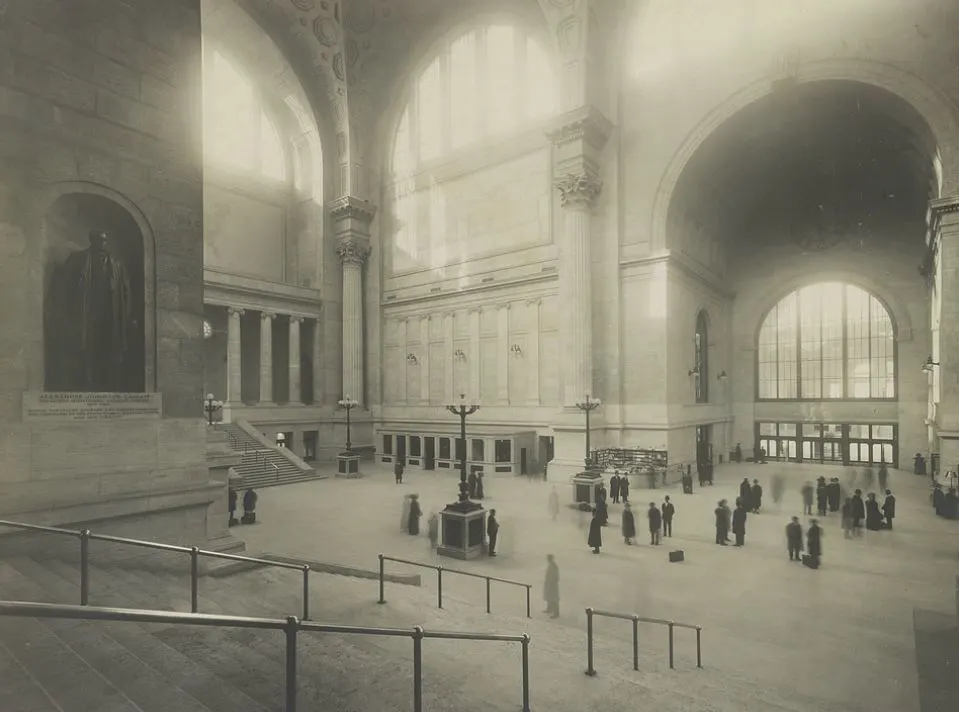One of the most incredible attractions in Rome can be found on the most important plaza of the ancient city.
In this post, we’ll take a closer look at some of the most interesting Basilica of Maxentius facts, an amazing ancient building in the heart of Rome.
1. The building is situated on the Roman Forum
The Basilica of Maxentius, which is also sometimes known as the “Basilica Nova” or the Basilica of Maxentius and Constantine,” is an ancient Roman structure located on the Roman Forum, the ancient Roman marketplace, and the heart of the ancient city.
Most of the structure now lays in ruins but its remains still give us a clear insight into the building process and architectural design used all these centuries ago.
The structure is situated on the northern side of the Roman Forum and flanks the “Via dei Fori Imperiali” to the north. The Roman Colosseum is situated just a few hundred meters to the southwest of the Basilica.
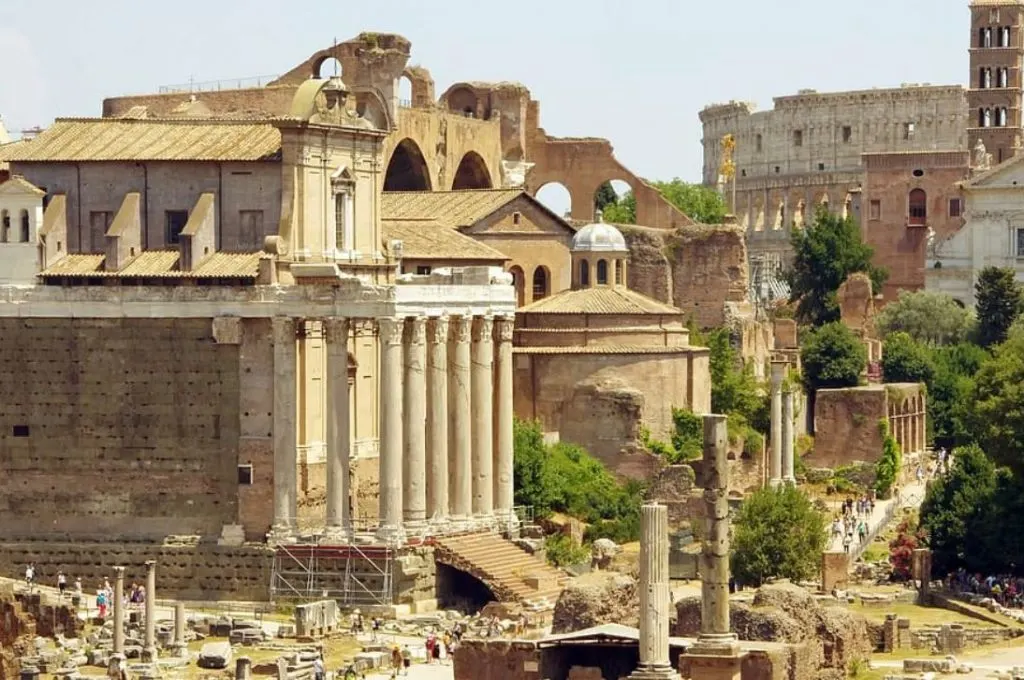
2. It was completed in the early 4th century A.D. by 2 Emperors
The construction of this enormous building started in the year 308 A.D. during the reign of Roman Emperor Maxentius, a man who was Roman Emperor between 306 and 312 A.D.
His reign was stopped abruptly following the Battle of the Milvian Bridge in 312 when he fought against Constantine I. As he attempted to flee the battlefield he drowned in the Tiber River in the northern part of the city of Rome.
This didn’t stop the construction, though, because the building was completed that same year in 312 by Maxentius’ successor Constantine I.
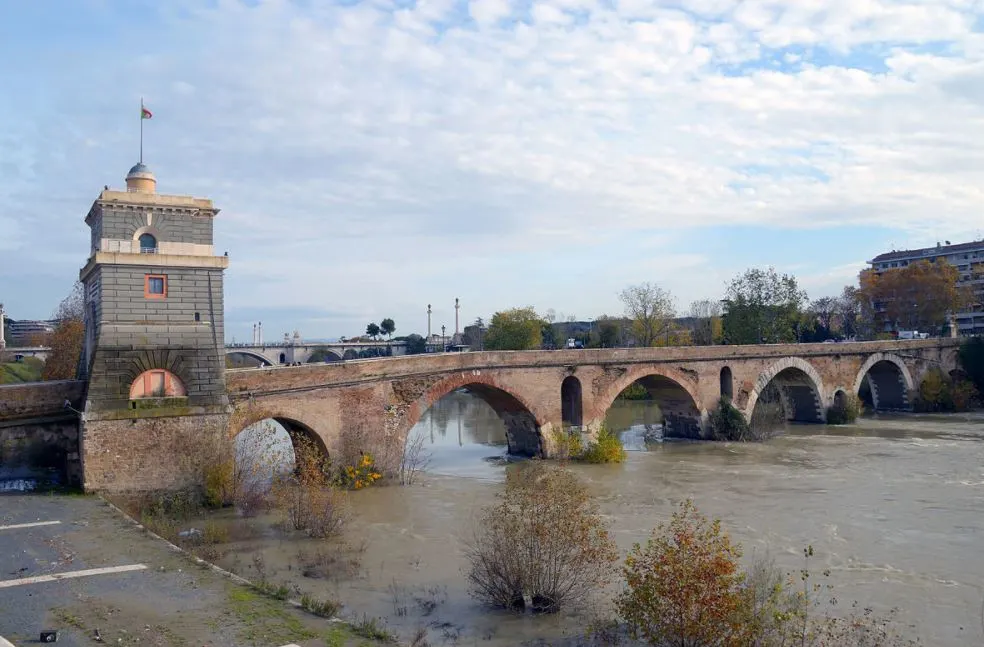
3. This structure became an important predecessor in architecture
One of the most remarkable Basilicas of Maxentius facts is that even though it was referred to as a “Basilica,” it wasn’t intended to be used as a church initially.

A basilica in ancient Rome was merely a large public building that was used for a wide variety of purposes. It could serve as a court, a meeting place, for public speeches, or religious purposes.
Constantine the Great was the first Christian Roman Emperor so its purpose was quickly turned into a house of Christian worship. Because of this, all large churches and cathedrals are now referred to as “Basilicas,” which is a reference to the Basilica of Maxentius and Constantine.
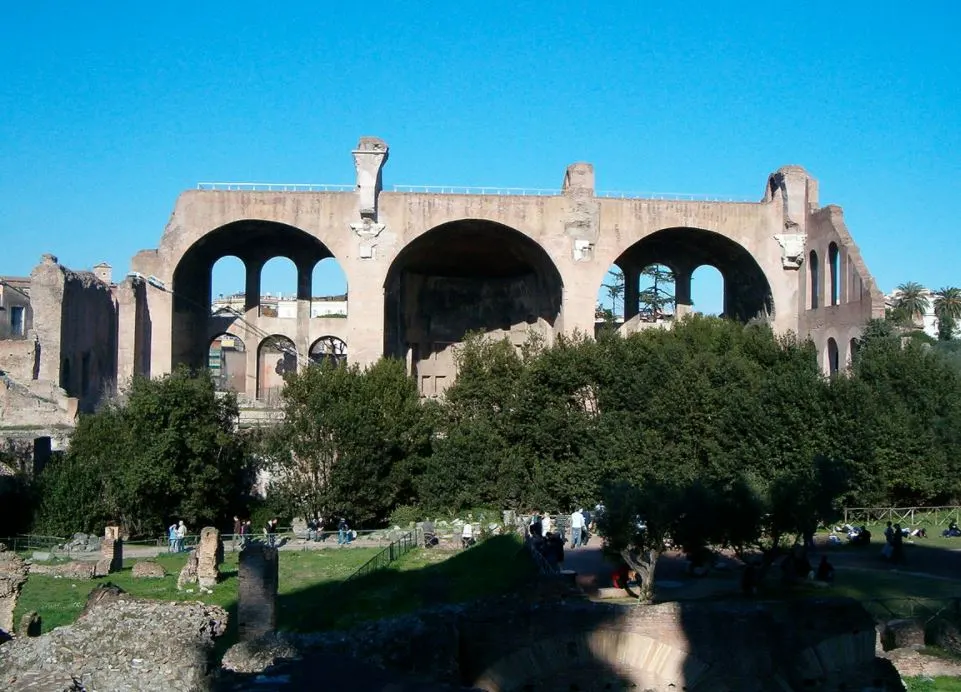
4. It was the largest structure ever built on the Forum
Even though it was the final Basilica ever constructed in the city of Rome during the Roman Empire, it was the largest structure ever built on the Roman Forum.
The building was huge as it was built on a rectangular concrete platform with a length of 100 meters (328 feet) and a width of 65 meters (213 feet).
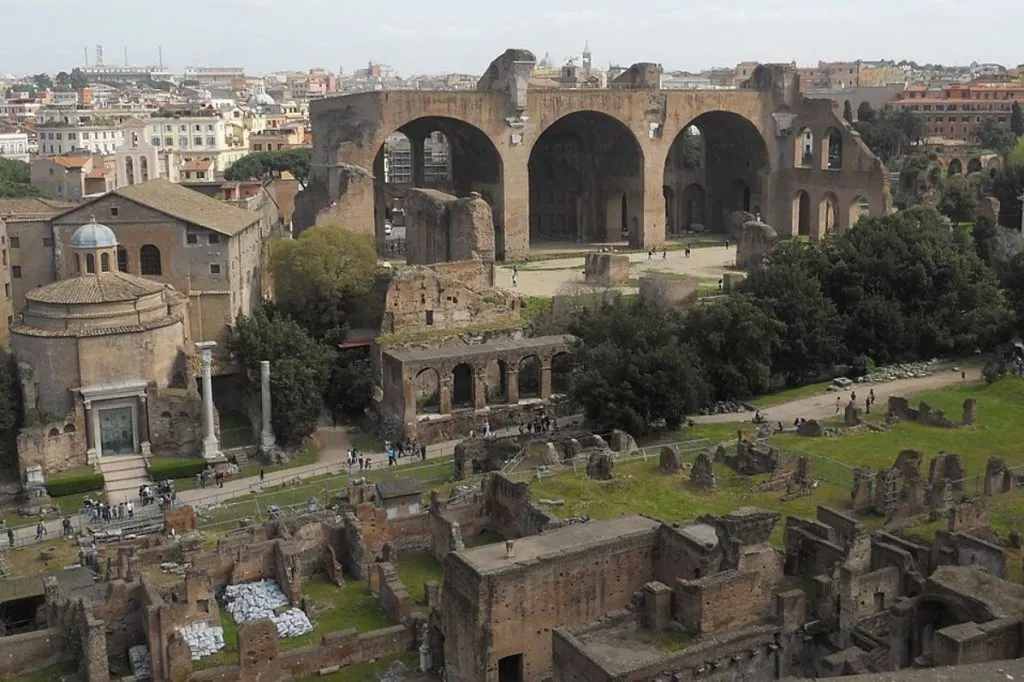
5. The architectural design made it look even bigger than it actually was
The most important architectural concept of ancient Rome was to impress and wow the people entering the building. That’s why the structure featured elements that made it look even bigger than it really was.
The design of the structure pretty much had the same design as cathedrals and churches with a central nave flanked by two side aisles. The central nave was 80 meters (260 feet) long and 25 meters (82 feet) wide while the side aisles were 16 meters (52 feet) wide each.
The height of the central nave was 35 meters (115 feet) high, which was slightly taller than the 24.5 meters (80 feet) of the side aisles. This height difference in combination with the vast open space of the interior must have given the Basilica’s interior a sense of awe for everybody entering.

6. The interior was decorated with a colossal statue of Constantine
Because Constantine the Great was the Roman Emperor who completed the building, he was the one who was able to choose the interior decoration. Just like many Emperors before him, he chose to glorify himself with a huge statue referred to as the “Colossus of Constantine.”
The central nave of the Basilica had a total floor space of 2,000 square meters (22,000 square feet) which means it had to be huge to impress visitors.
Constantine was depicted as seating and the statue was about 12 meters (40 feet) high. The head alone had a height of 2.5 meters (76 feet) while each of his feet had a length of 2 meters (61 feet).
While the statue in its entirety was destroyed, fragments of it, including the Emperor’s head, are now on public display at the Capitoline Museums in Rome!
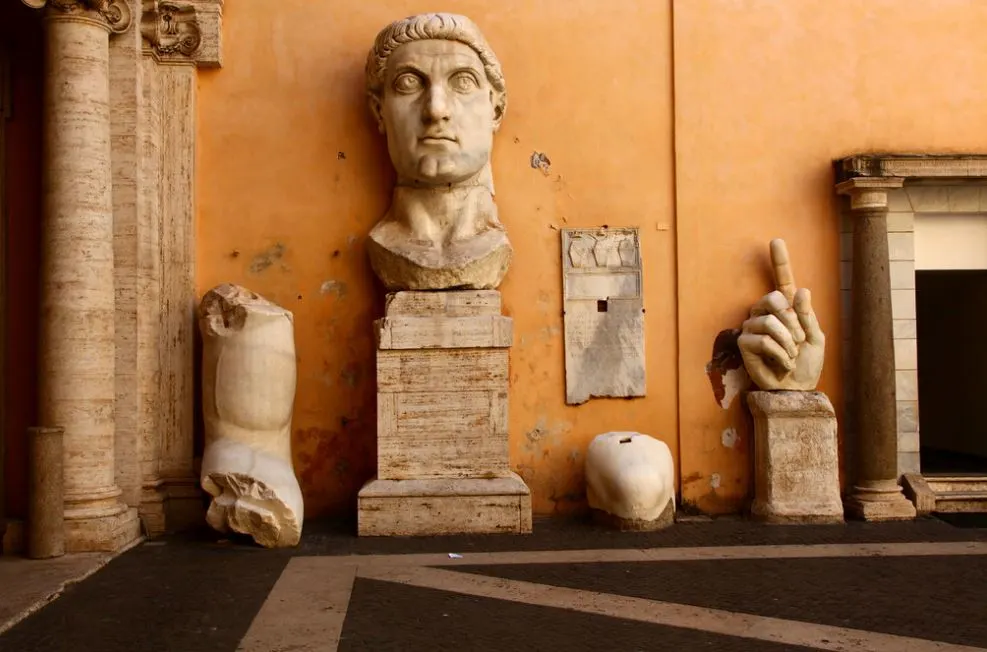
7. One of the enormous columns now decorates a Roman square
The main architectural feature of the Basilica was the coffered vaults which were able to support most of the structure. This was in sheer contrast to the ancient Roman temples that used columns to carry the weight of the structure.
Regardless, there were 8 monumental marble columns integrated into the building’s design that stood 20 meters (65 feet) tall. 7 of these were destroyed and lost to history, but one of these can still be admired today.
This column is referred to as the “Column of Peace” and is located on the Piazza Santa Maria Maggiore since 1614. It was moved just outside the Major Basilica called the “Santa Maria Maggiore” by Pope Paul V. This massive church is located a few hundred meters to the northwest of the Roman Forum.
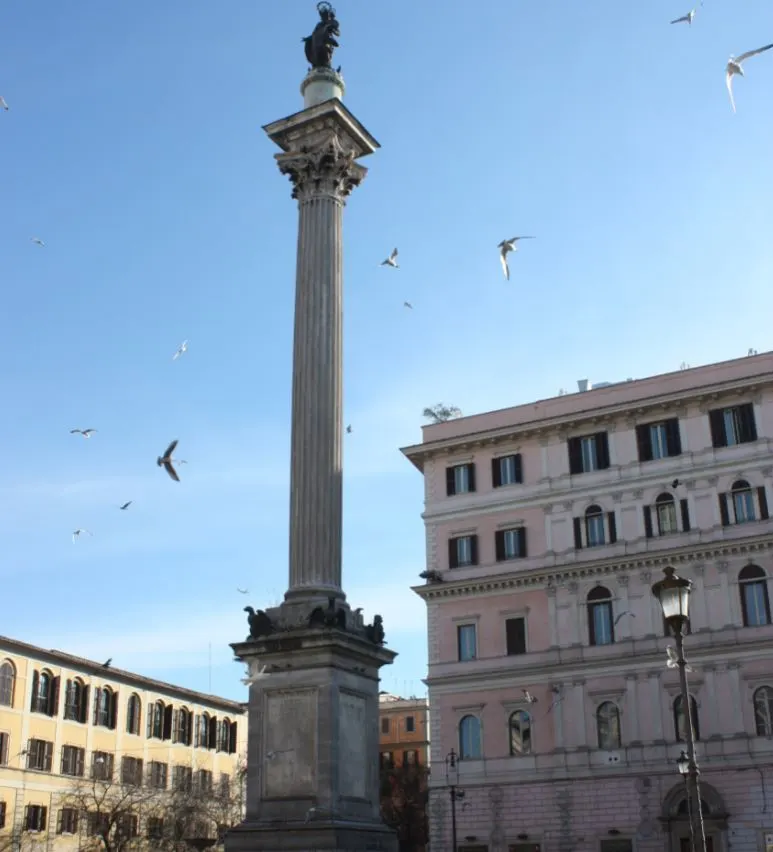
8. Many parts of the building were destroyed over the centuries
Today, all that remains of the architectural features of the building is part of the northern side aisle. This still gives us a clear view of the advanced capabilities of ancient Roman engineers, even though it’s still a small section of the entire structure.
It’s assumed that most parts of the building were destroyed by a massive earthquake in 847. The vault of the central nave collapsed during another earthquake in the year 1349.
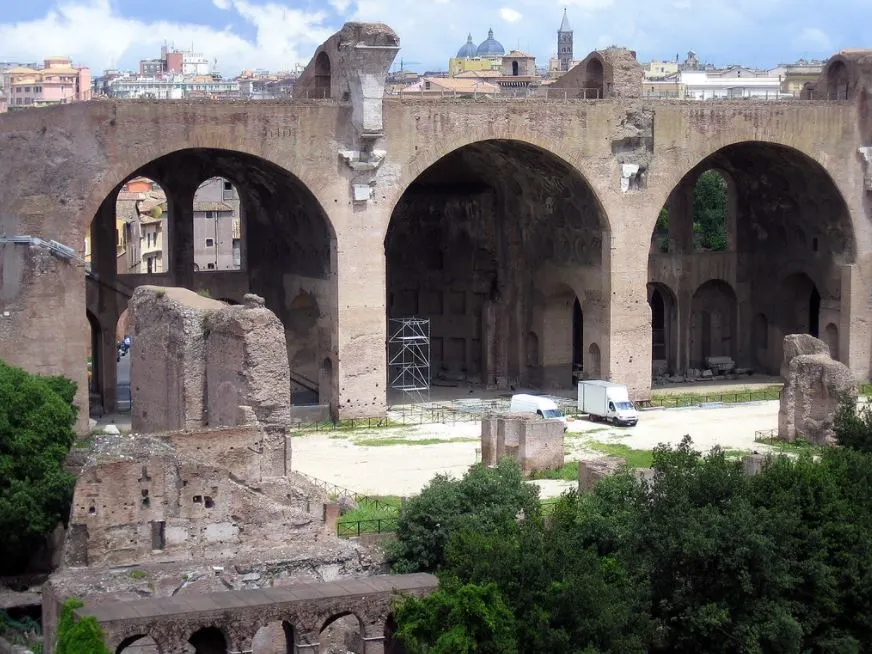
9. It became the inspiration for a railway station in New York City
One of the most interesting facts about the Basilica of Maxentius is that it has served as a source of inspiration for many buildings. Apart from the typical design of a central nave and side aisles which can be found in most churches today, it also became an inspiration for a famous building in New York City.
This building was the Pennsylvania Station which was completed in 1910. This structure was demolished in 1963, however, but the underground section still serves as today’s “Penn Station.” After the building was demolished, Madison Square Garden was built on top of it.
